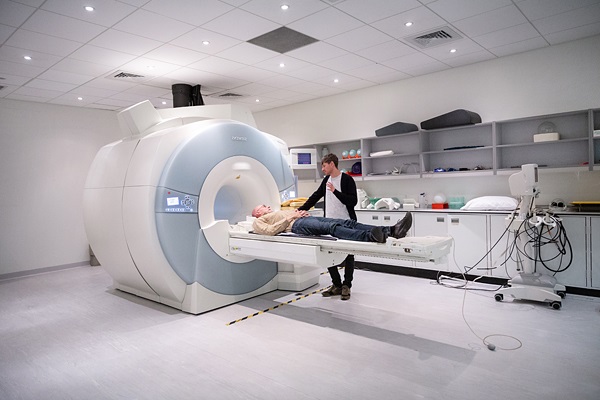A weighted blanket is a blanket that is filled with materials, such as plastic pellets or glass beads, to increase its weight. The weight of the blanket is evenly distributed across the surface of the blanket, and is typically about 10% of the person’s body weight who will use it. The added weight is thought to provide a sensation of deep pressure touch, which can have a calming effect on the body and mind. This can help individuals who have difficulty sleeping or who have certain medical conditions such as anxiety or autism. Weighted blanket may also be known as gravity blanket, therapeutic blanket, heavy blanket, calming blanket, and more.
The weight of a weighted blanket is typically around 10% of the person’s body weight.
How Many KG of Weighted Blankets, 2kg, …. 6 kg, 10 kg or more?
The weight of a weighted blanket is
typically around 10% of the person’s body weight.
For example, a person who weighs 150 pounds (68 kg) would use a blanket that weighs around 15 pounds (6.8 kg). It is also common for weighted blanket to be made with weight range from 2 kg to 12 kg . It’s important to note that the exact weight that is appropriate for an individual can vary depending on personal preferences and needs. Some people may prefer a lighter blanket, while others may prefer a heavier one. It’s best to consult with a healthcare professional or a therapist before using a weighted blanket to ensure it’s safe and appropriate for you.
How Weighted Blankets Work
Weighted blankets work by providing a sensation of deep pressure touch, which is thought to have a calming effect on the body and mind. The sensation is similar to the feeling of being hugged or swaddled, and it is thought to mimic the effects of a warm embrace.
Deep pressure touch is believed to stimulate the release of serotonin, a neurotransmitter that regulates mood and sleep. Serotonin is converted to melatonin, a hormone that helps regulate the sleep-wake cycle.
The added weight of the blanket also provides a sense of security and comfort, which can help to reduce anxiety and promote relaxation. The deep pressure touch and weight can also stimulate the release of endorphins, which are natural painkillers and mood elevators.
It is usually recommended to use a weighted blanket that is around 10% of the user’s body weight. The pressure provided by the blanket is evenly distributed, and the feeling of being hugged or swaddled creates a sensation of comfort and helps to relax the body and mind, leading to improved sleep quality.
It’s important to note, that weighted blanket is not recommended for everyone, for example people with respiratory problems, or for use on infants and young children without consultation with doctor or therapist.
Benefits of Weighted Blanket
Weighted blankets have been shown to have a number of potential benefits, including:
- Improved sleep: The deep pressure touch provided by the weight of the blanket is thought to promote relaxation and calmness, which can help to improve sleep quality.
- Reduced anxiety: The added weight and sensation of being hugged or swaddled can help to reduce anxiety and promote a sense of security and comfort.
- Less stress: The deep pressure touch of a weighted blanket is believed to simulate the feeling of being hugged, which can help to reduce stress levels.
- Better mood: By stimulating the release of serotonin and endorphins, weighted blankets can help to improve mood and reduce symptoms of depression.
- Autistic & ADHD patients: It has been reported by some parents and caregivers that Weighted Blanket have a calming effect on individuals with autism and ADHD, by providing the sense of deep pressure touch to the body, it helps them to feel more secure and comfortable.
It’s important to note that the benefits of weighted blanket vary per person, and its suggested to consult with a healthcare professional before using a weighted blanket, especially if you have underlying medical conditions. It’s also important to use a blanket that is the appropriate weight for your body.
Cons of Weighted Blankets
Weighted blankets can have a number of potential downsides. Not all people may find these cons as negative, depending on their specific needs and preferences. It’s best to consult with a healthcare professional before using a weighted blanket to ensure it’s safe and appropriate for you.
- Overheating: Because weighted blankets are typically made from heavy materials, they can cause the person using the blanket to overheat. This can be especially problematic for individuals who already have difficulty regulating their body temperature.
- Difficulty moving: The added weight of the blanket can make it difficult for the person using the blanket to move around, which can be uncomfortable for some people.
- Risk of suffocation: The added weight of the blanket can pose a suffocation risk for infants, young children and individuals with respiratory problems. It’s important to consult with a healthcare professional before using a weighted blanket, especially if you or someone you know has these conditions.
- Cost: Weighted blankets can be relatively expensive, especially when compared to traditional blankets.
- Size/weight not appropriate : If the blanket is not the appropriate weight or size for the user, it may not provide the benefits that the individual is looking for, and in some cases may even cause discomfort.
- Noise: Some weighted blankets are made with materials that can create noise when the user moves under them, this can be bothersome for some people.





